
I think it’s fair to say that anyone seeking self-improvement is after the best method possible. And with all of the information out there, this can be a hard find. Well, I’m going to cut through the bullshit and give you the best muscle-building exercises for each muscle group.
Variety and periodization are key in any strength training program for maximal strength and muscle growth, but there are definitely exercises that target a specific muscle group better than any others. Although you shouldn’t use only these exercises in your program, they can definitely provide a core foundation to your routine.
You’re going to find a lot of compound movements in this list because the best way to increase muscle is to get STRONG. Isolation moves have their place, but the key to building muscle is gaining strength. The goal is to move more weight than you did before and to recruit maximal muscle fibers. Variation in a long-term program is necessary, but adding more weight and changing rep schemes are a form of variation.
You will not find a single machine exercise in this list. Free weights are actually safer, translate better to real-world strength, and require greater muscle activation from both the targeted muscle group and the stabilizing muscles. Essentially, your body must work harder when moving free weights.
In addition to strength training, building muscle requires proper nutrition and ample recovery. Always keep this in mind when creating or choosing a strength training program. Okay, without further ado, here’s the list!
Chest: Dumbbell Bench Press
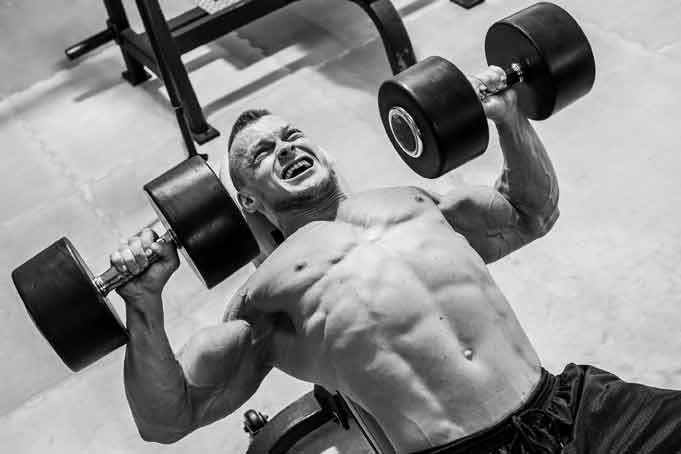
Although you may be able to press more weight with a barbell, the dumbbell bench press is a superior exercise.The dumbbell press allows for an increased range of motion, which means greater muscle movement and activation. You’re able to perform the press with an arching movement, rather than a strict up and down motion, allowing you to squeeze at the top, which causes more tension in the chest muscles through greater horizontal adduction. Because each limb must move the dumbbell independently, muscle development will be more symmetrical. Each side must do equal work to press the weight. When pressing a barbell, dominant muscles can be favored, making one side do more work or causing less recruitment of weaker muscles. Also, when your hands are locked on a barbell, their natural tendency is to move outward as you press, causing shoulder and tricep recruitment that reduces the tension on the chest muscles.
How to: Grasp two dumbbells with an overhand grip while sitting at the edge of a flat bench. With dumbbells resting on knees, simultaneously lie back on the bench while bringing the dumbbells to the side of your torso at chest level. Raise the dumbbells to a straight arm position, directly over your chest, without locking your elbows. This is the starting position. Bend your arms and lower the dumbbells to either side of your chest to a position that is still comfortable, but where maximum stretch is achieved — about a 90-degree angle. Raise dumbbells to the starting position and repeat for desired number of reps.
Lower-Back: Conventional Deadlifts
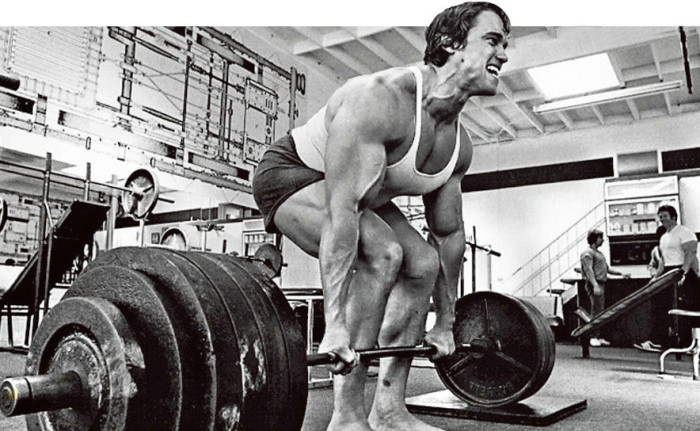
The deadlift will work your lower back better than any other exercise, but it could really be considered the king of strength training movements. The deadlift improves core strength by engaging the muscles in the back, abdominals, and glutes. These muscles support nearly every movement of the body and must be strengthened to improve functionality and all other lifts. When done correctly, you will use almost every muscle group, which releases muscle-building growth hormones. Your overall strength will vastly improve when the deadlift is regularly incorporated into your routine. The deadlift also has real-life applications, preventing injuries that occur through lifting heavy objects with incorrect form and positioning.
How to: Stand with feet hip-width apart with the barbell centered over your feet. Bend at the hip and grasp the bar with hands shoulder-width apart. Inhale, lower your hips and bend the knees until shins touch the bar while maintaining a flat back and neutral spine. Look up, keep your chest up, and drive through the heels as you lift the bar upward. After the bar passes the knees, pull the shoulder blades back and pull the bar back while thrusting hips forward into the bar. Slowly lower the bar to the floor while bending at the hips and maintaining a flat back.
Lats: Pull-ups
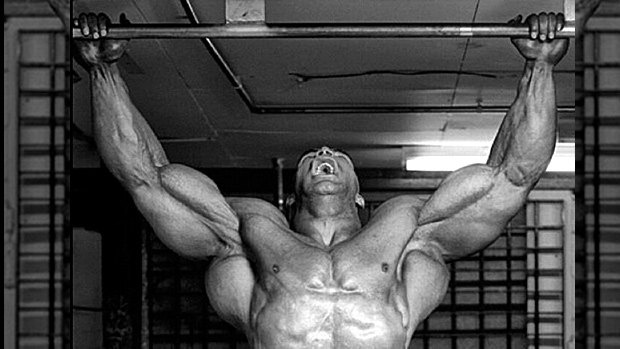
Pull-ups will undoubtedly give you a thick, wide back that enhances your physique and creates the V-shape taper, but the benefits go far beyond looks. This compound exercise primarily targets your lats, but will also recruit your brachioradialis in your arms, biceps, triceps, forearms and grip muscles, and core stabilizers. Essentially, this is a full upper-body workout. The pull-up also offers many grip variations that target different muscles. It is a functional movement with real-world application that burns major calories and stimulates the release of muscle-building testosterone and growth hormone. Oh, and you’ll look like a badass in the gym.
How to: Grab the bar with palms facing forward at your desired grip width. Create a curvature in your lower back and stick your chest out to put your torso at about a 30-degree angle from the bar. Draw the shoulders and upper arms down and back while pulling the torso to the bar until your upper chest touches the bar. Throughout this portion of the movement, exhale, keep the torso stationary, and squeeze the back at the top position. Inhale and lower yourself back to the starting position with arms extended and lats fully stretched.
Press next for a superior upper body…
Triceps: Parallel Dips
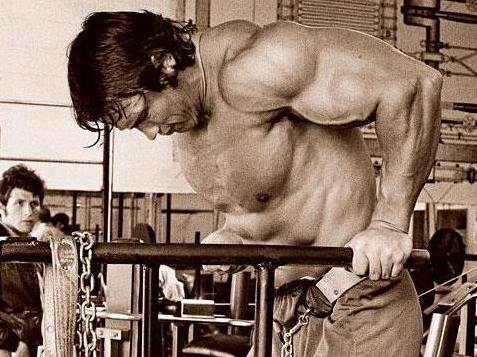
The dip is a highly effective compound movement that primarily targets the triceps and chest. It requires minimal equipment and improves upper-body strength, joint stability and mobility and body weight control. This closed kinetic chain exercise simultaneously stresses opposing muscle groups as you lift and lower your body. The dip will rapidly strengthen all three muscles that comprise the triceps, just make sure you have enough shoulder strength and stability to reduce the risk of injury.
How to: Place hands, palms facing inward, on either side of a parallel bar. Take a small jump into starting position where arms are straight and locked out. Maintaining a straight torso, slowly lower your body by flexing at the elbows until arms are past 90 degrees. Push yourself back up into starting position.
Biceps: Incline Dumbbell Curl
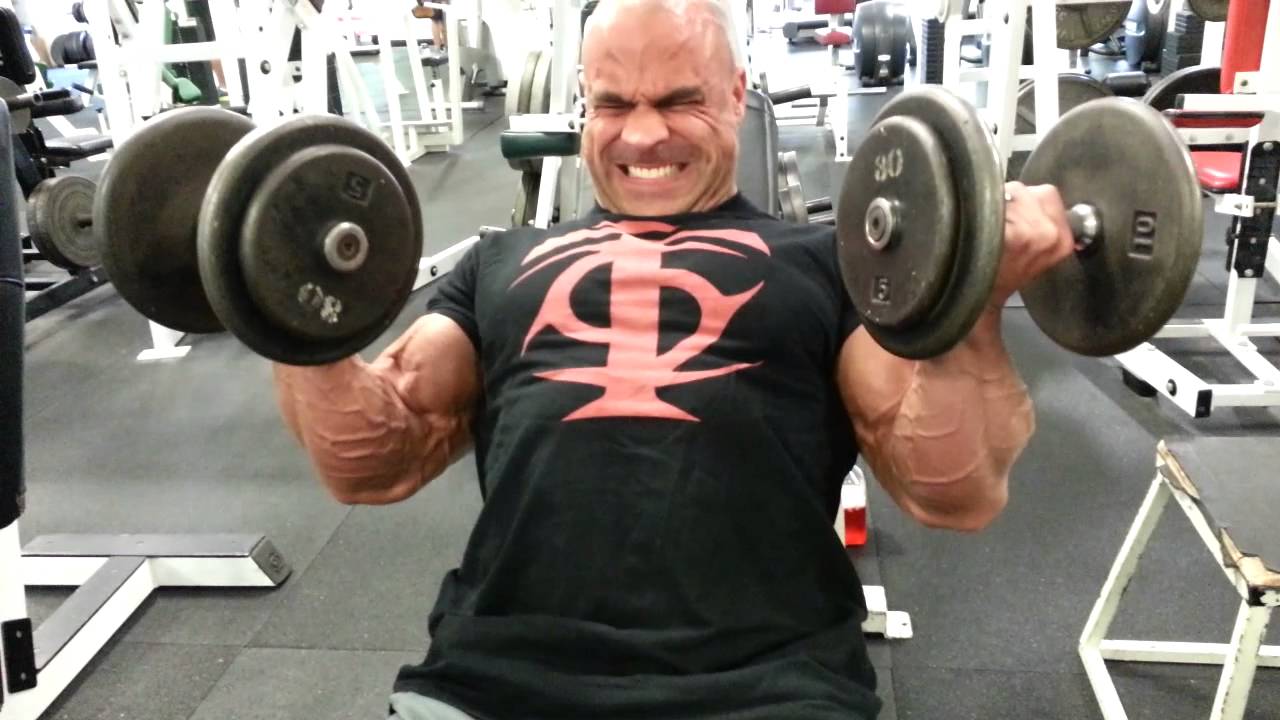
Although you know by now that I favor compound, functional movements, the best way to truly isolate the bicep is with an incline dumbbell curl. This movement places the bicep in a loaded, stretched position, causing maximum muscle recruitment. Stabilization also comes into play because each arm is moving independently, which helps strengthen joints and ligaments.
How to: With dumbbells in each hand, sit back on an incline bench. Rotate palms of hands until they are facing away from you and keep your elbows close to your torso. Curl the weights forward and up by contracting the biceps while the upper arm remains stationary. Bring dumbbells to shoulder level until biceps are fully contracted. Lower dumbbells to starting position.
Anterior Deltoids: Standing Overhead Dumbbell Press
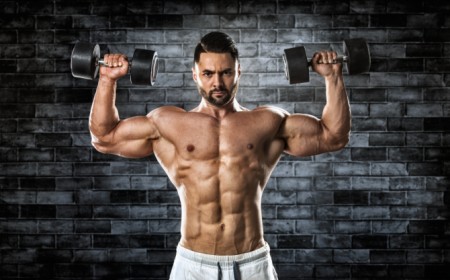
Yes, another full-body, compound movement for you. Back in the day, when bodybuilders were actually strong, the standing overhead press was the primary upper-body pressing exercise and an indicator of strength. It targets your delts, traps, triceps, serratus, while also engaging the core muscles in your abs, lower back, glutes and upper thighs. Wouldn’t you rather increase overall strength than target your shoulders in a seated position? A seated press also contributes to spinal compression that can lead to back pain and injuries. Although using a barbell is fine and allows more weight to be pressed, I would recommend using dumbbells to develop independent motor control, greater stabilization efforts, and an even distribution of work required from each side.
How to: With dumbbells in hand, stand with feet shoulder-width apart. Raise dumbbells to head height, forming a 90-degree angle with your arms with elbows out and palms facing forward. Extend your arms through your elbow to drive the dumbbells upward until weights are together over your head while maintaining strict posture. Slowly return weights to starting position.
Lateral Deltoids: Dumbbell Lateral Raise
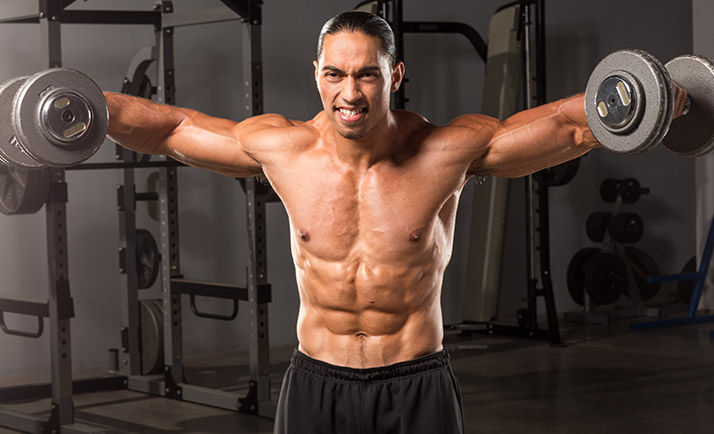
The middle head of the deltoid is primarily used in the lateral raise. The supraspinatus of the rotator cuff, a muscle that provides strength, stability, and mobility to the shoulder, is used for the first 30 degrees of the raise, the middle head of the deltoid provides force from 30-45 degrees, and the traps take over past 45 degrees. For maximal upper-body development, take the raise 45 degrees past parallel to the floor. You can vary this exercise and the muscle emphasis by changing the angle of the raise, leading to wide, developed shoulders.
How to: Stand with feet shoulder-width apart with your arms by your sides, grasping dumbbells in hand and palms facing inward. Slowly raise the arms to the side while maintaining a slight bend at the elbow until shoulder height. Slowly lower and repeat.
Posterior Deltoids: Standing Rear Delt Dumbbell Flyes

For extreme shoulder development, you must exercise from all angles, with this exercise targeting the posterior (back) delts. The core muscles will also be engaged when doing this move in a standing position.
How to: Stand with your arms by your sides with dumbbells in hand and palms facing inward, bend knees and bend over through the hips with a flat back until back is close to horizontal, raise the arms laterally from below the chest to shoulder level while maintaining a slight elbow bend, lower arms and repeat
Abs: Stability Ball Pike Ups

Although your abs will be thoroughly worked in the above compound exercises, it is still wise to train abs in other ways. The stability ball pike up requires a great amount of core strength, stability, and overall balance. This move works the entire core and takes a great deal of concentration. Break free of your usual ab routine and work both your body and your mind with this move.
How to: Position shins on a stability ball and bring your body into push-up position. Lift your hips upward by contracting abs and raise your body into a V shape until feet are on top of the ball. Keep back and legs straight. Lower back into starting position.
Complete your physique with strong legs on the next page!
Quads: Back Squat
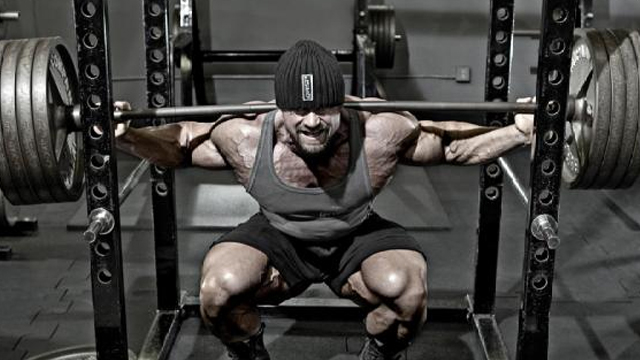
No exercise will develop and strengthen your quads like the back squat. Plus, you get the muscle-building hormone release and increased strength and calorie burn of a compound move from using nearly every muscle in your body to move weight through space. The squat also contributes to functional strength that crosses over into everyday life and sports, improved mobility, and better balance. The squat strengthens your stabilizer muscles, joints, and ligaments, making you less prone to injury. Your glutes, hamstrings, spinal erectors, abdominals, obliques and even your calves must work during the squat. This highly versatile move also allows you to target different areas of the legs by changing your stance. Holding the weight on your back, rather than your front, is safer and I recommend mastering this move first before altering the position of the weight.
How to: Get under the loaded barbell, support the bar on your traps and grasp the bar, wider than shoulders with palms facing forward and chest up. Place feet hip-width apart. Descend while supporting the weight by bending at the knees. Keep knees aligned with feet and torso upright. Lower as far as possible, at least forming a 90-degree angle with legs, keeping the weight in the heel. From the bottom, drive the weight upward while keeping grounded in the heels, back to starting position.
Glutes: Barbell Glute Bridge
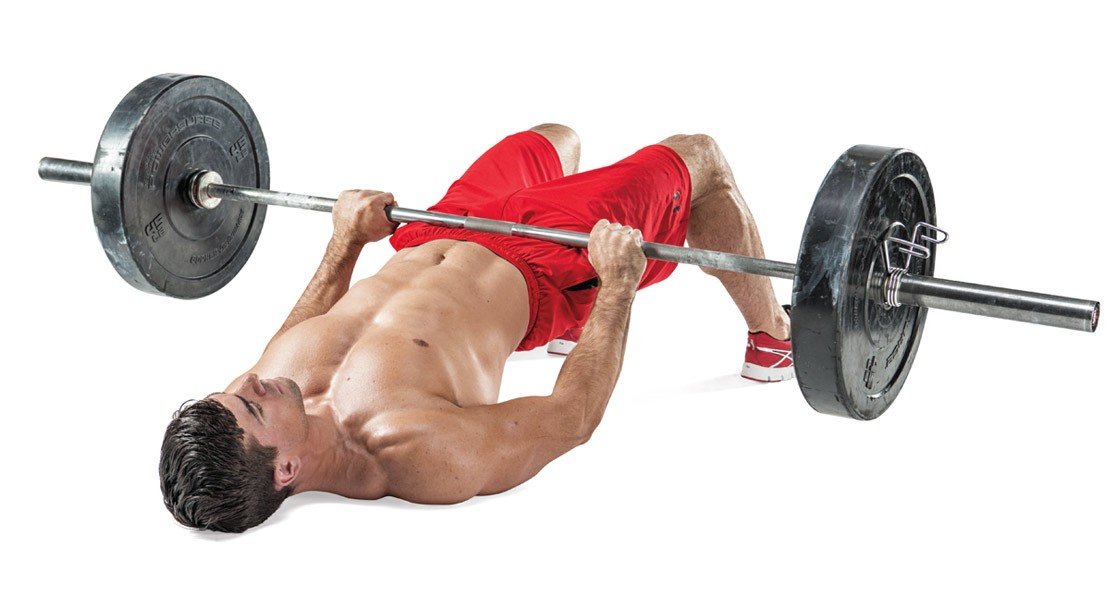
Many people think that squats and deadlifts are the only moves necessary to build the glutes, but there are many other movements that target the glutes more directly and cause greater muscle fiber recruitment. If you haven’t been targeting your glutes directly, you’ll likely start off using a lighter weight than expected. This move builds glute hypertrophy and addresses lower back pain while improving posture and overall athleticism.
How to: Sit on the ground with a loaded barbell over your legs. Roll barbell until it is directly above your hips and lie back on the ground. Legs should be bent with knees up and heels firmly planted. To lift the barbell, drive through your heels, extend at the hips and thrust torso upward. Your body is supported by your heels and upper back. Extend as far as possible, then lower to starting position.
Hamstring: Romanian Deadlift
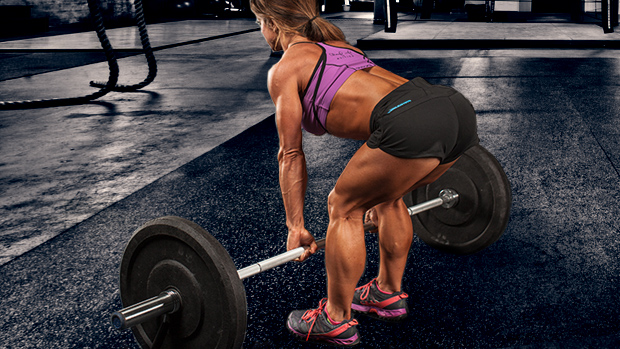
Most leg training exercises predominantly target the quads, with the hip extensor muscles, the glutes, and hamstrings, being trained ineffectively or to a lesser degree and causing imbalance. The Romanian Deadlift is an intense, functional exercise in which a lot of weight can be moved. This effectively trains that hamstrings because they are made up of primarily fast-twitch muscles that respond well to high intensity.
How to: To start, hold the barbell at hips with palms facing down, shoulders back, back arched, and knees slightly bent with feet shoulder-width apart. Lower the bar to feet by pushing your butt back and bending at the hips, keeping a straight back and slightly bending knees. Once hamstrings are fully stretched or the bar is near the floor, lift the weight back to starting position by extending hips forward and straightening at the knees while keeping shoulders back.
Calves: Standing Dumbbell Calf Raise

The standing calf raise with a pause at the top and full stretch at the bottom triggers maximal calf growth. Calves respond well to periodization, so alternate using high reps with low weight and low reps with heavier weight. This ensures that both muscles of the calf are thoroughly worked, with the soleus, slow-twitch dominant muscle responding to high reps and the gastrocnemius, fast-twitch dominant muscle responding to lower reps. Using dumbbells, rather than the machine, requires more balance and stabilization throughout the entire body, recruiting more muscle fibers.
How to: With dumbbells in hands and arms by your side, step onto a raised surface with feet shoulder-width apart. Toes and balls of feet should be on the surface with arches and heels extending off. Raise heels by flexing ankles as far as possible and squeezing calves. Lower heels to starting position until calves are maximally stretched.
So, there you have it. Incorporate these exercises into your program and let the gains begin!
If you’re looking for a comprehensive plan, complete with strength, power, cardio, and a few extras, look no further than my Perfect Workout Plan for 2017.
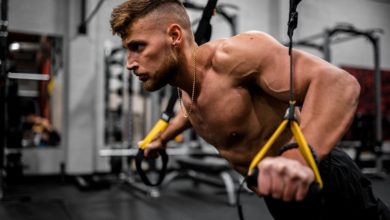
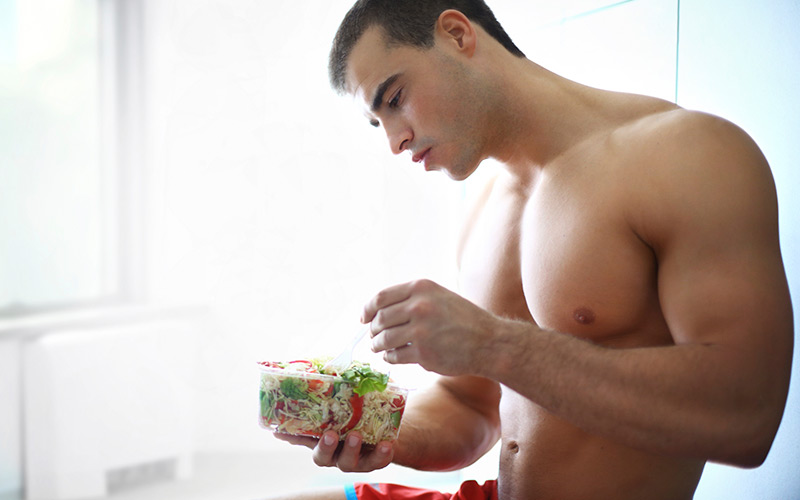
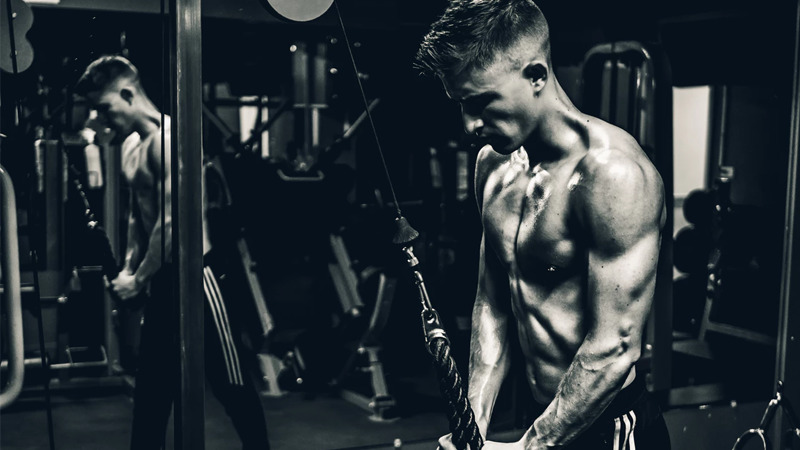
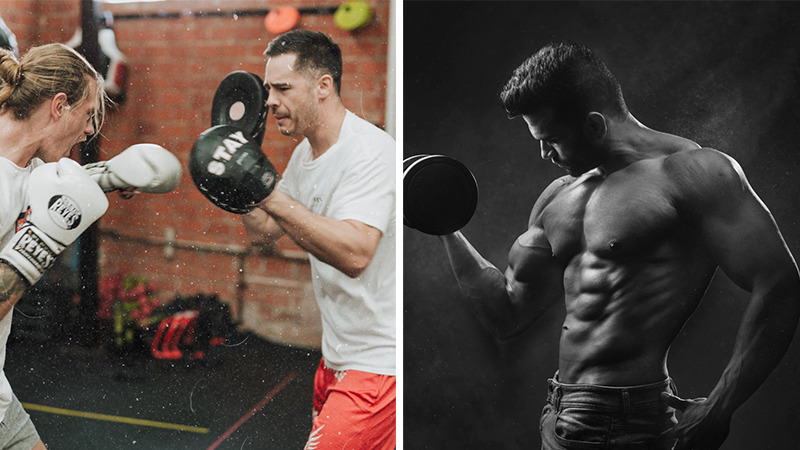
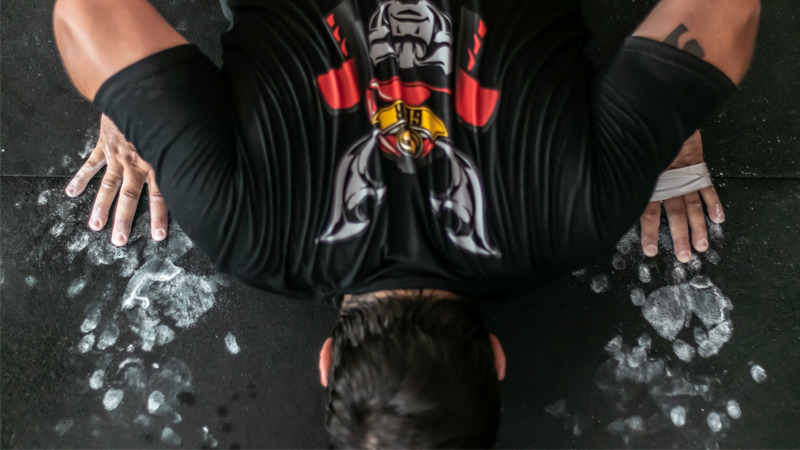
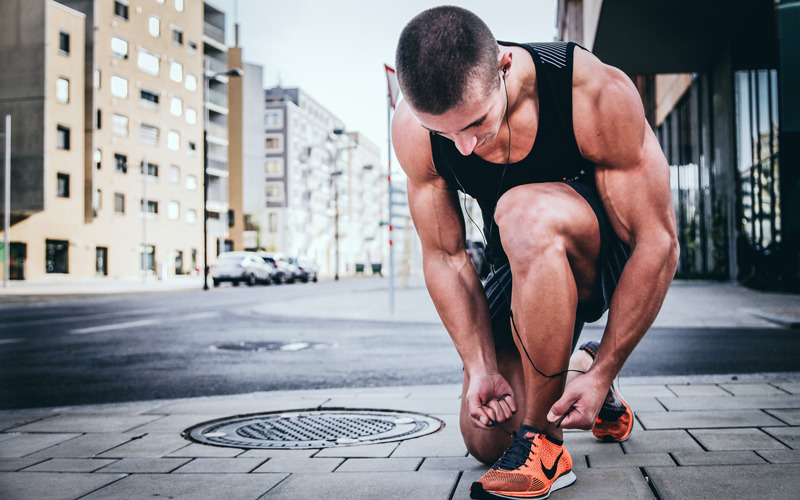
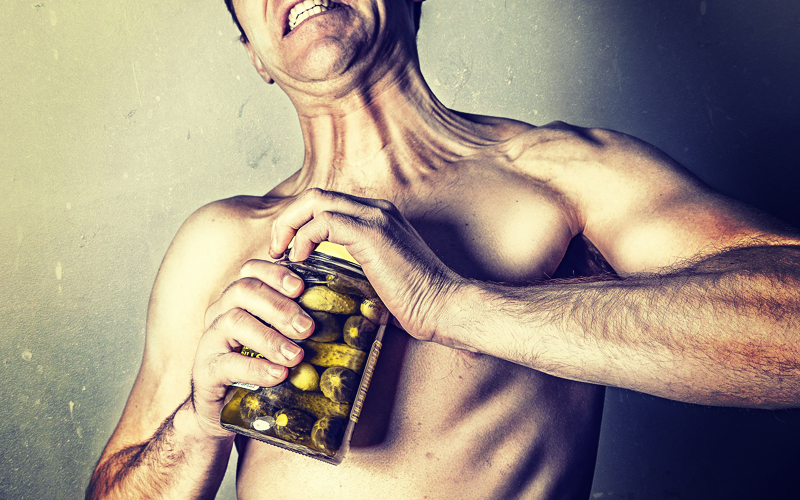
Hi I’d like to get in shape though I’m already training but I need some advice on how to upgrade from my normal training session, I would also like tips of what supplement should I for burning fat and gaining muscles… Thank you